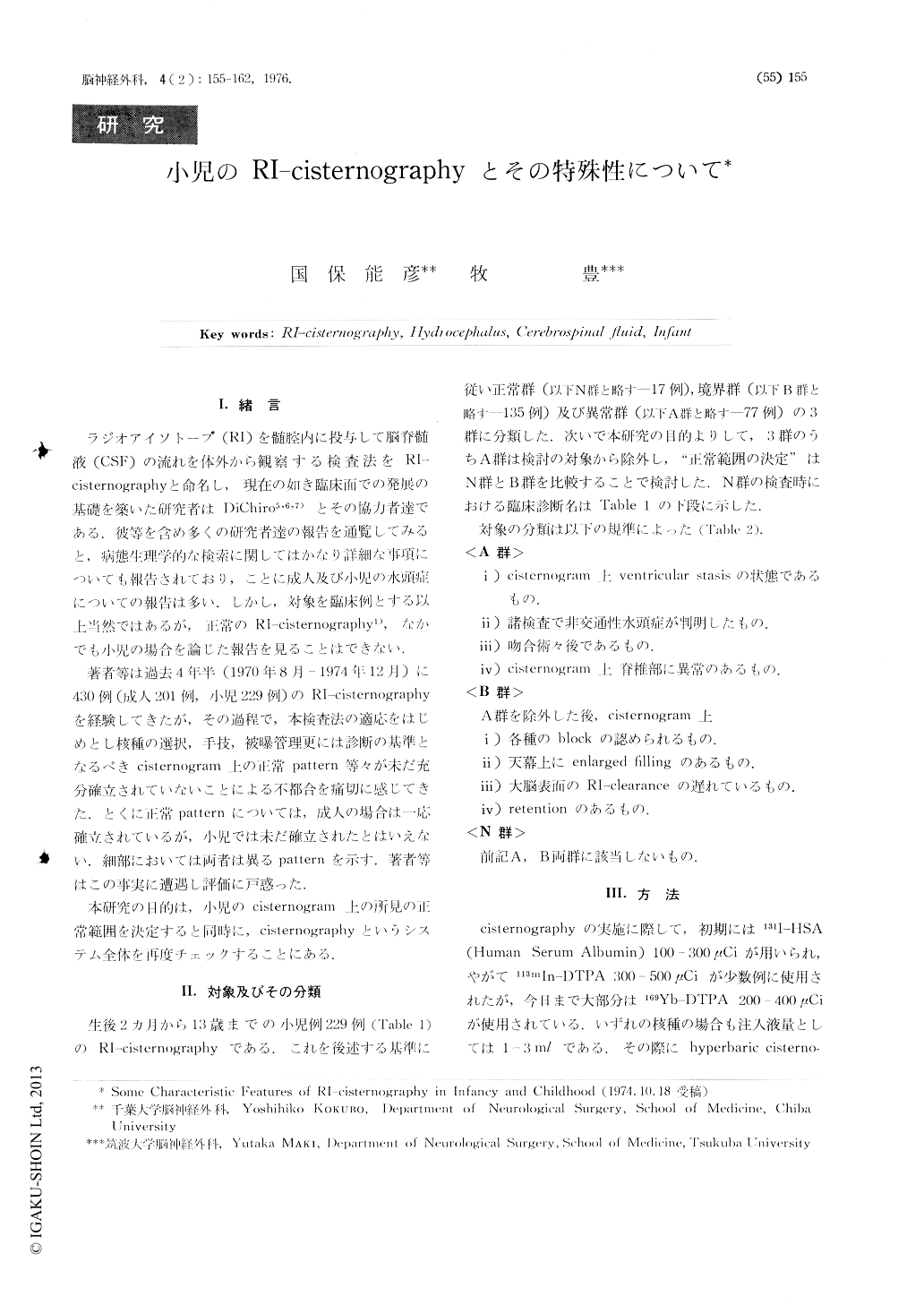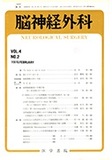Japanese
English
- 有料閲覧
- Abstract 文献概要
- 1ページ目 Look Inside
Ⅰ.緒言
ラジオアイソトープ(RI)を髄腔内に投与して脳脊髄液(CSF)の流れを体外から観察する検査法をRI-cisternographyと命名し,現在の如き臨床面での発展の基礎を築いた研究者はDiChiro5,6,7)とその協力者達である.彼等を含め多くの研究者達の報告を通覧してみると,病態生理学的な検索に関してはかなり詳細な事項についても報告されており,ことに成人及び小児の水頭症についての報告は多い.しかし,対象を臨床例とする以上当然ではあるが,正常のRI-cisternography1),なかでも小児の場合を論じた報告を見ることはできない.
著者等は過去4年半(1970年8月−1974年12月)に430例(成人201例,小児229例)のRI-cisternographyを経験してきたが,その過程で,本検査法の適応をはじめとし核種の選択,手技,被曝管理更には診断の基準となるべきcisternogram上の正常pattern等々が未だ充分確立されていないことによる不都合を痛切に感じてきた.とくに正常patternについては,成人の場合は一応確立されているが,小児では未だ確立されたとはいえない.細部においては両者は異るpatternを示す.著者等はこの事実に遭遇し評価に戸惑った.
There are few reports which discussed normal RI-cisternography in infancy and childhood. The cisternograms of the children between 2 months and 13 year-old were classified under a criteria into three groups; 17 normal cases, 135 borderline cases and 77 abnormal cases. The former two groups were compared with each other and characteristic findings of RI-cisternography in infants and children were appreciated clinically. And we attempted to establish normal RI-cisternography.
The characteristic findings are:

Copyright © 1976, Igaku-Shoin Ltd. All rights reserved.


